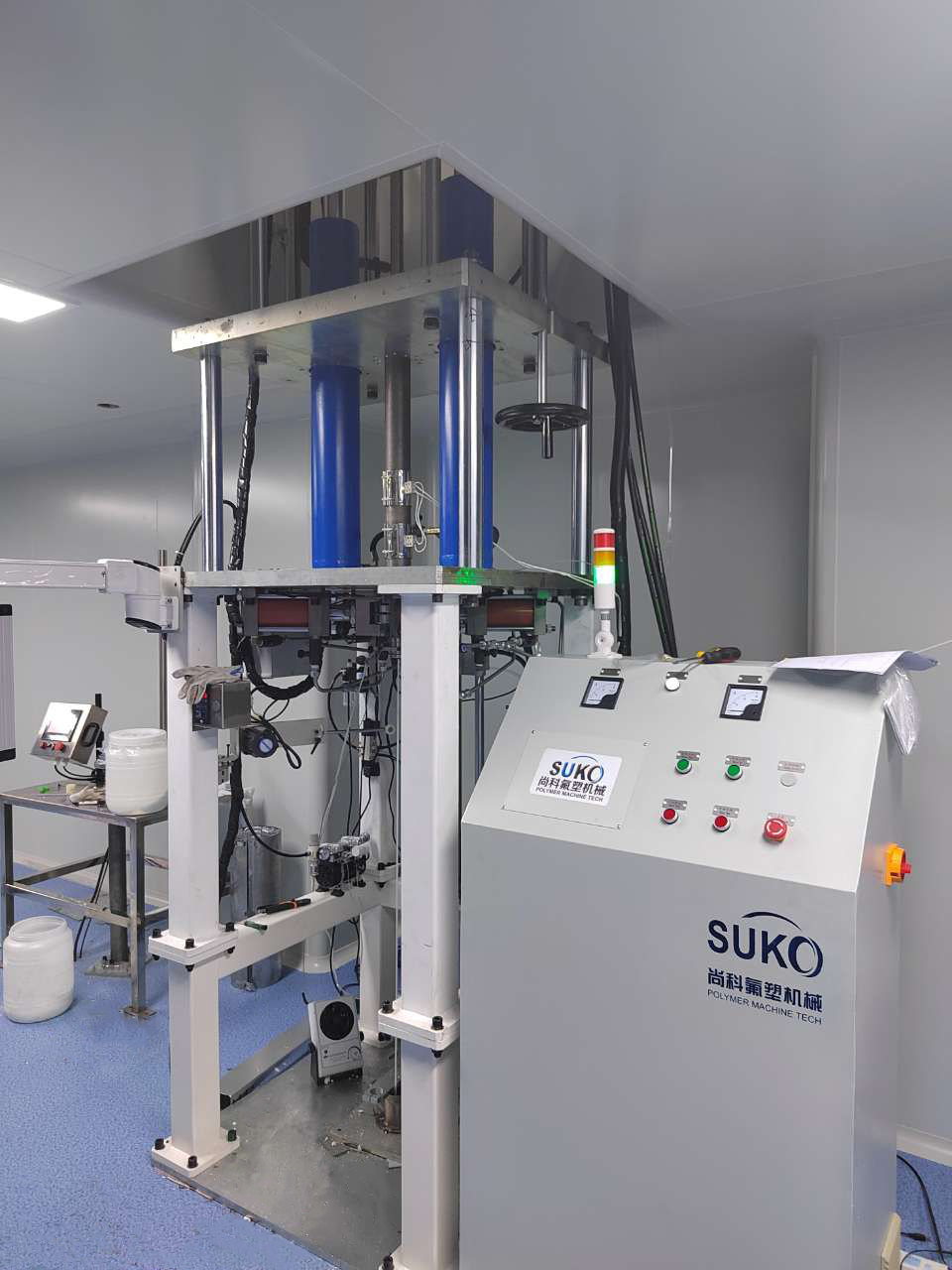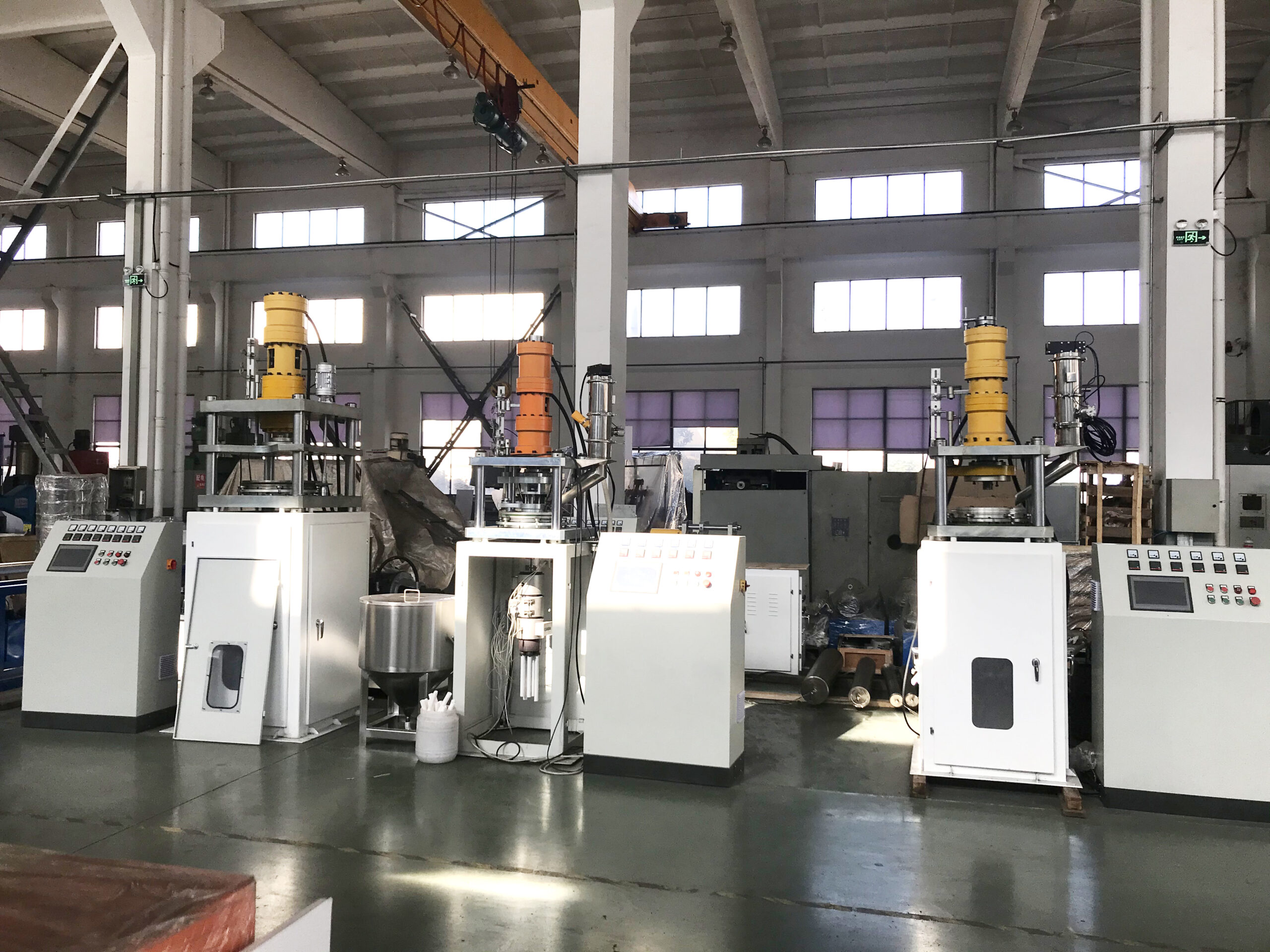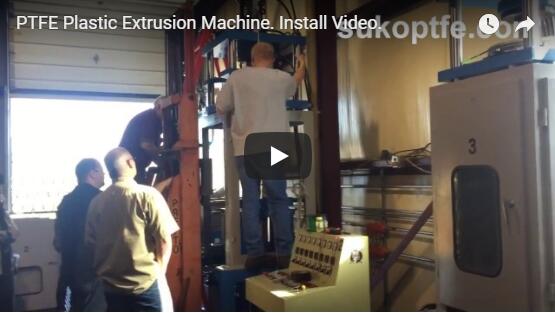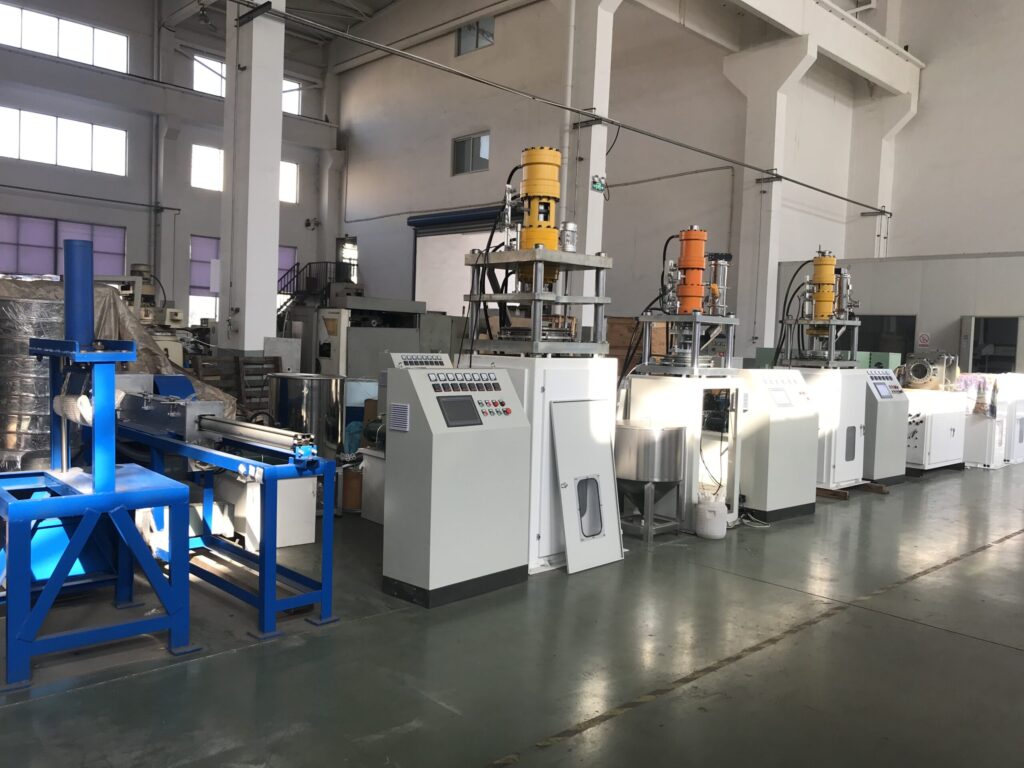
In the demanding landscape of modern industry, the choice of fluid and gas transfer solutions can significantly impact efficiency, safety, and operational costs. Among the myriad of options, Polytetrafluoroethylene (PTFE) hoses stand out for their remarkable properties. But what makes them so special, and how does the manufacturing process, particularly paste extrusion, contribute to their superior performance?
What Exactly is a PTFE Hose?
PTFE, a synthetic fluoropolymer of tetrafluoroethylene, is more commonly known by its DuPont brand name, Teflon. A PTFE hose is essentially a tube constructed from this versatile material. The core (or liner) of the hose is made from PTFE, which can then be unbraided (for low-pressure applications) or, more commonly, reinforced with an outer layer, typically stainless steel braiding, to handle higher pressures and provide mechanical strength.
The true magic of PTFE lies in its molecular structure – a long chain of carbon atoms fully sheathed by fluorine atoms. This structure imparts a unique combination of characteristics that make industrial PTFE hose options highly sought after.
The Unparalleled Advantages: Why Choose PTFE Hoses?
The PTFE hose benefits are numerous and significant, making them suitable for a wide range of critical applications. Here’s a closer look:
-
Exceptional Chemical Resistance: This is arguably the most celebrated property. PTFE is virtually inert to almost all industrial chemicals, acids, bases, solvents, and corrosive agents. This makes it an ideal chemical resistant hose for transferring aggressive media without degradation or contamination.
- Impact: Longer service life, reduced risk of leaks, and preservation of media purity.
-
Wide Temperature Range: PTFE hoses can operate effectively across an exceptionally broad temperature spectrum, typically from -70°C to +260°C (-94°F to +500°F). This makes them a premier high-temperature hose solution, while also performing admirably in cryogenic applications.
- Impact: Versatility for processes involving extreme temperature fluctuations, from steam lines to cryogenic fluid transfer.
-
Extremely Low Coefficient of Friction: PTFE has one of the lowest coefficients of friction of any solid material.
- Impact: This results in smooth, non-stick surfaces, minimizing pressure drop, facilitating easier flow of viscous materials, and preventing material buildup or blockages. It also makes them easier to clean.
-
Non-Stick & Non-Contaminating Surface: The inherent non-stick (hydrophobic and oleophobic) nature of PTFE prevents materials from adhering to the hose inner wall. This is crucial for applications requiring high purity.
- Impact: Reduced risk of cross-contamination, ideal for food, pharmaceutical, and semiconductor industries. Easy cleaning and sterilization.
-
Durability and Longevity: PTFE is resistant to aging, UV radiation, oxidation, and embrittlement over time, even under harsh operating conditions.
- Impact: Extended lifespan, reduced maintenance, and lower replacement costs compared to many other hose materials.
-
Flexibility and Kink Resistance (especially with specific constructions): While virgin PTFE can be somewhat stiff, specialized manufacturing techniques like paste extrusion, and designs like convoluted hoses, can produce highly flexible PTFE hoses that resist kinking.
- Impact: Easier installation in tight spaces and improved reliability in dynamic applications.
-
Excellent Dielectric Properties: PTFE is an excellent electrical insulator, making it suitable for applications where electrical conductivity is undesirable.
- Impact: Safety in electrical environments and use in specific electronic manufacturing processes.
-
Biocompatibility & FDA Compliance: Many grades of PTFE are biocompatible and can meet FDA, USP Class VI, and other regulatory standards for food and pharmaceutical contact.
- Impact: Safe for use in sensitive applications where human contact or product purity is paramount.
PTFE Hose Advantages at a Glance:
| Feature | Description | Key Benefit for Users |
|---|---|---|
| Chemical Inertness | Resists nearly all chemicals, solvents, and corrosive agents. | Versatile, long-lasting in harsh chemical environments. |
| Wide Temperature Range | Operates from approx. -70°C to +260°C (-94°F to +500°F). | Suitable for extreme hot and cold processes. |
| Low Coefficient of Friction | One of the lowest of any solid material (typically 0.05 to 0.10). | Easy flow, reduced pressure drop, self-cleaning. |
| Non-Stick Surface | Prevents material build-up and contamination. | Maintains purity, easy to clean and sterilize. |
| UV & Weather Resistance | Excellent stability against UV radiation and weathering. | Ideal for outdoor and long-term installations. |
| Non-Flammable | High Limiting Oxygen Index (LOI >95%), doesn’t support combustion. | Enhanced safety in fire-risk environments. |
| FDA Compliant Grades | Available in grades meeting FDA 21 CFR 177.1550 for food contact. | Safe for food, beverage, and pharmaceutical use. |
Note: Specific properties can vary based on PTFE grade, manufacturing process, and hose construction.
The Crucial Role of Paste Extrusion in PTFE Hose Quality
While the inherent properties of PTFE are impressive, the manufacturing method plays a vital role in harnessing these advantages, especially for certain types of hoses. Paste extrusion is a specialized process used primarily for PTFE fine powders. It involves mixing the fine PTFE powder with a lubricant (like naphtha or white oil) to form a paste. This paste is then forced through a die under high pressure to form the desired hose shape (the “extrudate”). The lubricant is subsequently evaporated, and the extrudate is sintered (heated to high temperatures below its melting point) to fuse the PTFE particles, creating a solid, coherent structure.
Why is paste extrusion so important for paste extruded PTFE hose uses?
- Uniform Wall Thickness & Smooth Bores: Paste extrusion allows for precise control over wall thickness and produces exceptionally smooth internal surfaces, minimizing flow restrictions and potential points of failure.
- Flexibility: Hoses made via paste extrusion, especially smaller bore or thin-wall hoses, can achieve greater flexibility compared to some other methods.
- Complex Geometries: This method is well-suited for producing convoluted hoses, which offer enhanced flexibility and kink resistance.
- High Purity & Integrity: The process, when managed correctly, can produce hoses with high material integrity, crucial for applications demanding purity.
At SUKO, we understand the intricacies of PTFE processing. Our expertise lies in providing cutting-edge machinery, including Reliable PTFE Hose Paste Extruder Machines, that empower manufacturers to produce top-tier PTFE hoses. The quality of the hose is intrinsically linked to the quality of the machinery used in its production. You can learn more about our advanced paste extrusion technology for applications like water treatment and desalination on our product page: Reliable PTFE Hose Paste Extruder Machine for Water Treatment & Desalination Solutions.
Top PTFE Hose Applications: Where Performance is Paramount
The unique combination of PTFE hose benefits makes them indispensable across a multitude of industries. Here are some key PTFE hose applications:
-
Chemical Processing & Transfer:
- Why PTFE? Unmatched chemical resistance to acids, caustics, solvents.
- Examples: Transferring aggressive chemicals, sampling lines, batch processing, chemical resistant hose requirements in manufacturing.
-
Automotive & Motorsport:
- Why PTFE? High temperature resistance, fuel/oil compatibility, low friction.
- Examples: Fuel lines (especially for ethanol blends), brake lines, turbocharger oil feed/drain lines, nitrous oxide lines. Often an industrial PTFE hose grade is used here.
-
Aerospace & Defense:
- Why PTFE? Wide temperature range, chemical inertness, lightweight, reliability.
- Examples: Hydraulic fluid lines, fuel systems, oxygen lines, coolant lines in extreme environments.
-
Food & Beverage Processing:
- Why PTFE? Non-stick, non-toxic, FDA-compliant grades available, easy to clean/sterilize.
- Examples: Transfer of viscous food products, dairy processing, beverage dispensing, CIP (Clean-In-Place) systems.
-
Pharmaceutical & Medical:
- Why PTFE? Biocompatibility, high purity, non-contaminating, sterilizable.
- Examples: Fluid transfer in drug manufacturing, medical device components, laboratory use. Paste extruded PTFE hose uses are common here due to the need for smooth bores and purity.
-
Oil & Gas:
- Why PTFE? Chemical resistance (sour gas, drilling fluids), high temperature, pressure capabilities (when reinforced).
- Examples: Chemical injection lines, hydraulic control lines, subsea umbilicals.
-
Semiconductor Manufacturing:
- Why PTFE? Ultra-high purity, resistance to aggressive etching chemicals.
- Examples: Transfer of ultrapure water and specialty chemicals in cleanroom environments.
-
Paint & Solvent Spraying:
- Why PTFE? Chemical resistance to solvents and paints, easy cleaning due to non-stick surface.
- Examples: Paint lines, solvent flushing lines.
-
Steam Applications:
- Why PTFE? Excellent high-temperature hose capabilities for saturated steam.
- Examples: General industrial steam lines, autoclaves, sterilization equipment.
-
Water Treatment & Desalination:
- Why PTFE? Corrosion resistance against saline water and treatment chemicals.
- Examples: Dosing lines for chemicals like chlorine, anti-scalants, and transfer of treated or desalinated water. SUKO‘s machinery, such as our PTFE Hose Paste Extruder, plays a key role in producing hoses for these demanding systems.
This list is not exhaustive, as new PTFE hose applications are continually emerging due to the material’s versatility and the advancements in hose manufacturing technologies.
Choosing the Right PTFE Hose: Factors to Consider
Selecting the appropriate PTFE hose involves evaluating several factors:
- Operating Pressure: Determines the need for reinforcement (e.g., stainless steel braiding).
- Operating Temperature: Ensure the hose is rated for the application’s temperature extremes.
- Chemical Compatibility: While PTFE is broadly resistant, confirm for specific or highly concentrated chemicals.
- Bore Size (Inner Diameter): Dictated by flow rate requirements.
- Flexibility & Bend Radius: Important for installation and dynamic applications. Convoluted hoses offer greater flexibility.
- Static Dissipation: For applications involving flammable fluids or static-sensitive environments, anti-static PTFE hoses (with conductive carbon liners) are available.
- Regulatory Approvals: Such as FDA, USP Class VI, 3-A, if required for the application.
SUKO: Powering High-Performance PTFE Hose Production
At SUKO (https://ptfe-machinery.com/), we are not just suppliers of machinery; we are enablers of innovation and quality in the PTFE processing industry. We specialize in the design and manufacture of high-precision PTFE processing equipment, including state-of-the-art PTFE hose paste extruder machines.
Our commitment is to provide robust, reliable, and technologically advanced solutions that allow manufacturers to produce PTFE hoses meeting the highest standards of performance and quality. Whether you are looking to produce hoses for critical chemical applications, high-temperature environments, or specialized industrial PTFE hose needs, SUKO’s machinery offers the precision and efficiency required.
Are you interested in elevating your PTFE hose production capabilities?
The quality of your end product starts with the quality of your manufacturing equipment. With SUKO’s expertise in paste extrusion technology, you can unlock new levels of performance and reliability in your PTFE hose offerings.
- Explore our range of PTFE machinery: Visit our website at https://ptfe-machinery.com/
- Discuss your specific requirements: Contact our expert team via our Contact Page or email us directly at info@ptfe-machinery.com.
Conclusion: The Clear Choice for Demanding Applications
The evidence is clear: PTFE hoses offer a superior combination of chemical resistance, temperature performance, low friction, and durability that few other materials can match. When these inherent material advantages are coupled with advanced manufacturing techniques like paste extrusion – a process refined and supported by machinery from experts like SUKO – the result is a hosing solution capable of tackling the most demanding industrial challenges.
From aggressive chemical transfer to high-purity pharmaceutical processes, and robust industrial PTFE hose uses, the versatility and reliability of PTFE hoses make them an indispensable component in modern engineering.
If you’re seeking to leverage the power of PTFE in your applications, or if you’re a manufacturer aiming to produce world-class PTFE hoses, the journey begins with understanding the material and the technology behind it.
Ready to explore how SUKO’s advanced PTFE hose machinery can benefit your operations? Don’t let your processes be limited by inferior hosing. Contact SUKO today at info@ptfe-machinery.com or visit https://ptfe-machinery.com/contact/ to send an inquiry and discover the difference quality manufacturing can make!
Frequently Asked Questions (FAQ)
Q1: What makes PTFE hoses so exceptionally chemical resistant?
A1: PTFE’s chemical resistance stems from its molecular structure. It consists of a carbon backbone completely sheathed by highly electronegative fluorine atoms. The carbon-fluorine bond is extremely strong and stable, and the fluorine atoms create a dense, non-polar, and low-energy surface. This structure effectively shields the carbon chain from attack by most chemicals, solvents, acids, and bases, making the material virtually inert. This is a key reason it’s a preferred chemical resistant hose.
Q2: Can PTFE hoses handle high pressures? What about vacuum?
A2: Standard unbraided PTFE tubing has limited pressure-handling capabilities. However, most industrial PTFE hose options are reinforced with one or more layers of stainless steel (or other materials like aramid fiber) braiding. This reinforcement significantly increases the hose’s working pressure rating, allowing it to handle high pressures found in hydraulic systems, steam lines, and other demanding applications. For vacuum applications, PTFE hoses, particularly those with smooth bores, perform well. For higher vacuum or to prevent collapse in convoluted hoses, an internal support spring can be used.
Q3: Why is paste extrusion a preferred method for manufacturing certain types of PTFE hoses?
A3: Paste extrusion is preferred for several reasons, particularly for producing high-quality, flexible, or small-bore PTFE hoses, including those for critical paste extruded PTFE hose uses like medical or semiconductor applications. This method allows for:
- Better control over thin wall thicknesses and dimensional stability.
- Production of smoother internal surfaces, which reduces friction and prevents particle entrapment.
- Enhanced flexibility in the final product compared to hoses made from granular PTFE via ram extrusion.
- The ability to create longer continuous lengths of tubing.
- Suitability for PTFE fine powders, which result in a material with higher tensile strength and flex life than granular PTFE.
SUKO specializes in machinery for this advanced manufacturing process, detailed on our website https://ptfe-machinery.com/.
Q4: Are PTFE hoses suitable for food-grade and pharmaceutical applications?
A4: Yes, many grades of PTFE are inherently pure and can comply with stringent regulatory standards such as FDA 21 CFR 177.1550 for food contact and USP Class VI for medical/pharmaceutical applications. The non-stick, non-contaminating surface and its ability to withstand sterilization processes (like autoclaving) make PTFE hose applications ideal for these sensitive industries where hygiene and product integrity are paramount. It’s crucial to specify and verify that the particular PTFE hose and its construction meet the required certifications for your specific application.
Q5: How do PTFE hoses compare to rubber or silicone hoses in terms of performance?
A5: While rubber and silicone hoses have their own merits, PTFE hoses generally offer superior performance in several key areas:
- Chemical Resistance: PTFE is far more chemically resistant than most rubber and silicone compounds.
- Temperature Range: PTFE typically has a wider operating temperature range, especially at the higher end, than most rubbers and silicones.
- Low Friction & Non-Stick: PTFE’s coefficient of friction is significantly lower, and its non-stick properties are superior, leading to better flow and easier cleaning.
- Aging Resistance: PTFE is more resistant to aging, UV, and ozone degradation.
However, rubber and silicone hoses might offer greater flexibility in some configurations, better abrasion resistance (without specialized PTFE covers), and potentially lower cost for less demanding applications. The choice depends on the specific requirements of the application, balancing performance needs with cost.
Polymer Extruder Machine
Our Market
With fully technology support and process instruction to customers. Best after service after site commissioning.





